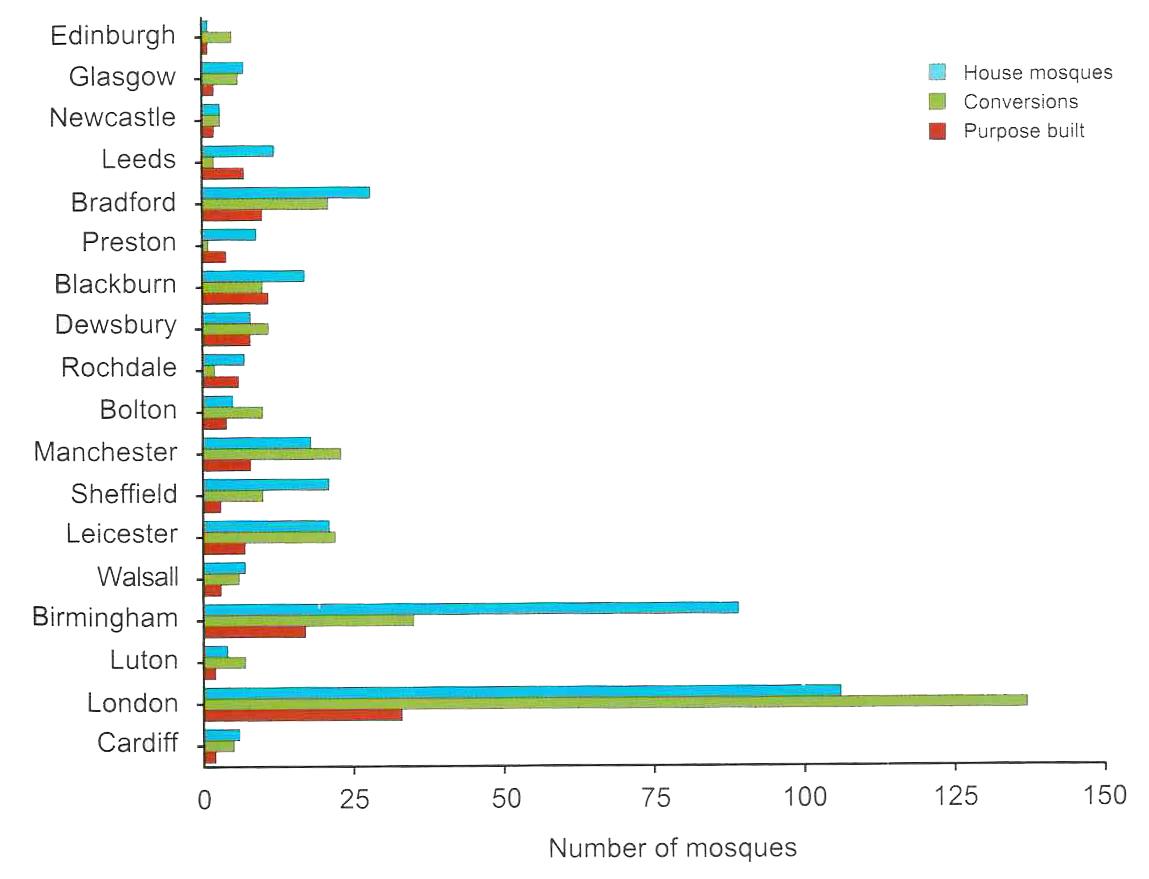
2 minute read
GEOGRAPHICAL SPREAD OF MOSQUES IN BRITAIN
from THE BRITISH MUSLIMS AND THE MOSQUES - An architectural, cultural and theological approach
by abmukadam
The population of Muslims in Britain has doubled every 15 years. As the Muslim population increases, so do the number of mosques in Britain. Based on the census data (2011) and the data gathered by Saleem (2012-2018), we can identify that Muslims and mosques cover almost every corner of the country, with some areas having a higher density than others (fig 8). We can also identify a pattern within the dispersion and density of the Muslim populationshows that the Northern and industrial cities (in Lancashire, London, and in the Midlands) have a higher population of Muslims. In effect, this also leads to a higher number of mosques, of which also a higher percentage are purpose-built. (fig 21).
Figure 21: Comparison of mosque types across key towns, (Saleem, 2012)
Advertisement
Some Northern cities have between 30-40% purposebuilt mosques, higher than the nationwide average of 16%. Leeds, Bradford, Blackburn, Preston, Dewsbury, and Rochdale all occupy this statistic. The population of Muslims within these cities is also greater than the national average. There are numerous social, geographical, cultural origin, socio-economics, and settlement patterns that have had an impact on the number of purposebuilt mosques around the country, particularly within the northern region.
Census data suggests that the majority of the Muslims in the northern region originate from the Indian subcontinent, particularly from the Gujrat state of India. The geographical and cultural origin of the Muslim population of Manchester and Birmingham, however, is from the Pakistan region of South Asia. This differentiation in geographical origin has an influence on the number of purpose-built mosques within these cities through social means.
Representatives of the Gujrati communities within Britain suggest that their community was highly organized as a self-supporting social network and that the establishment of a mosque and communal facilities was an important cooperative towards which resources were readily channelled (Saleem, 2018). The northern region has a well-established Pakistani and a majority Gujrati Indian community. According to findings from Saleem’s book (2018), Gujrati communities tend to show the importance and a sense of urgency for a tailored purpose-built mosque not only to carry out the daily prayers but also to create institutional establishments for Islamic and sharia education known as darul-uloom or a madrassa or Islamic school.
One may argue that Manchester, Birmingham and London
have a higher and dense population of Muslims, including Muslims from the Gujrat region too – so how do these cities differ in the number of purpose-built mosques? The 3 mentioned cities also have a higher concentration of the area of deprivation and lower socio-economics within the communities. This hinders the financial capabilities of the communities to purchase land and build a bespoke purpose-built mosque.

Figure 22: Mosques locations across Birmingham overlaid with density of Muslim population, Saleem (2012)
Figure 23: Mosques locations across Birmingham overlaid with levels of deprivation, Saleem (2012)









